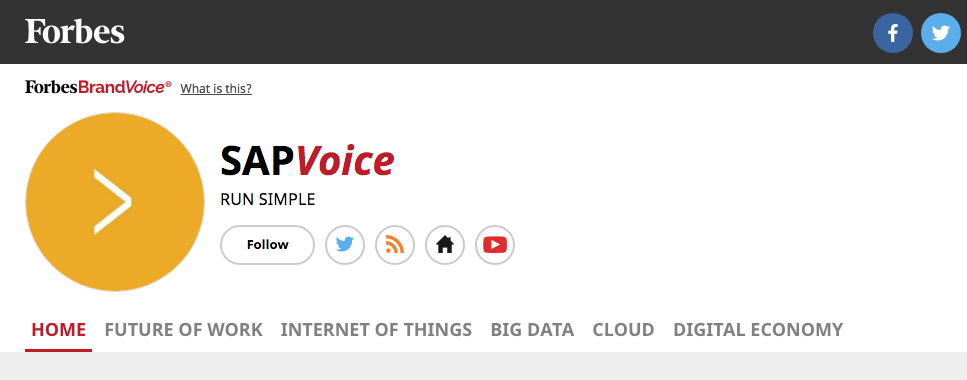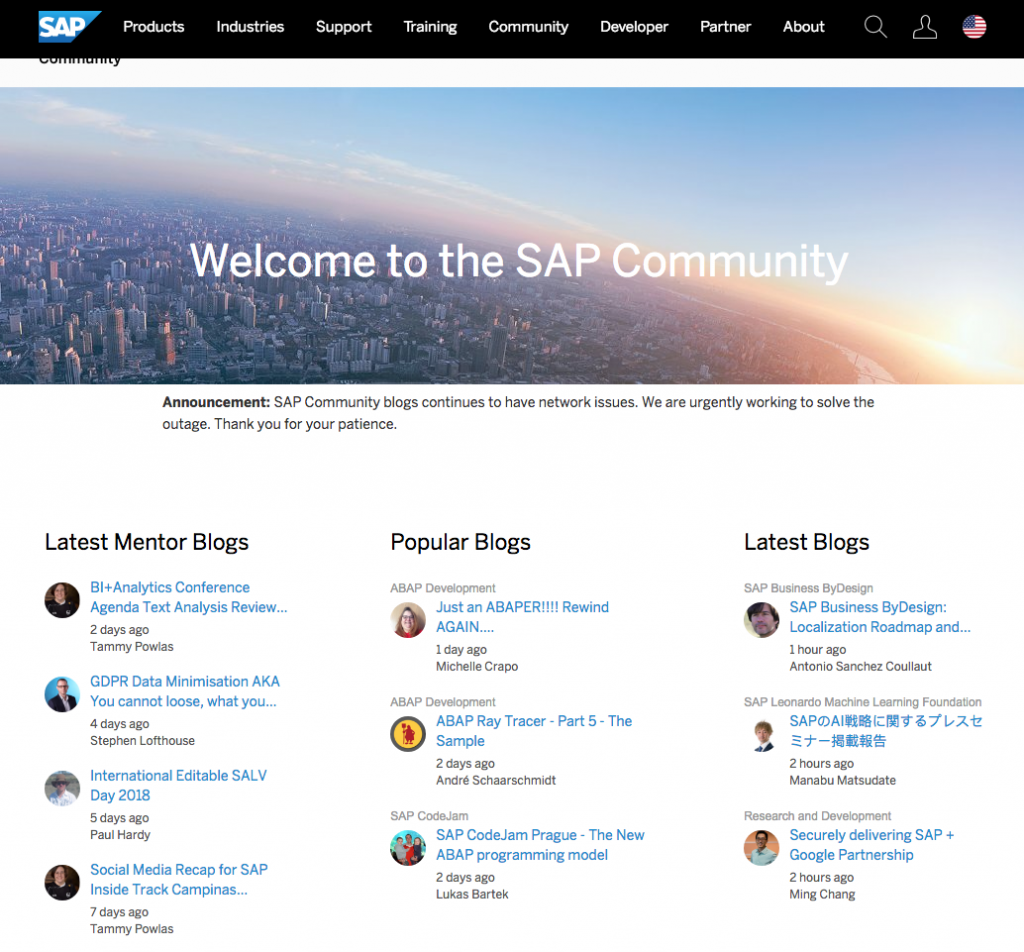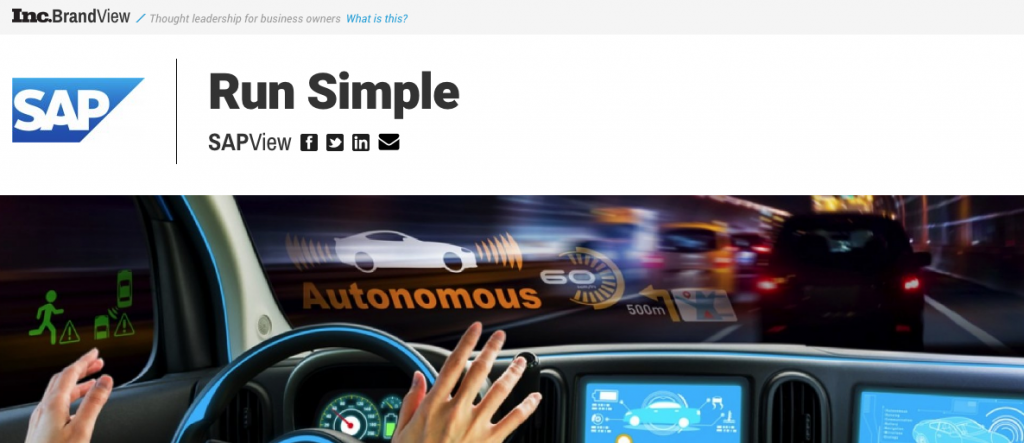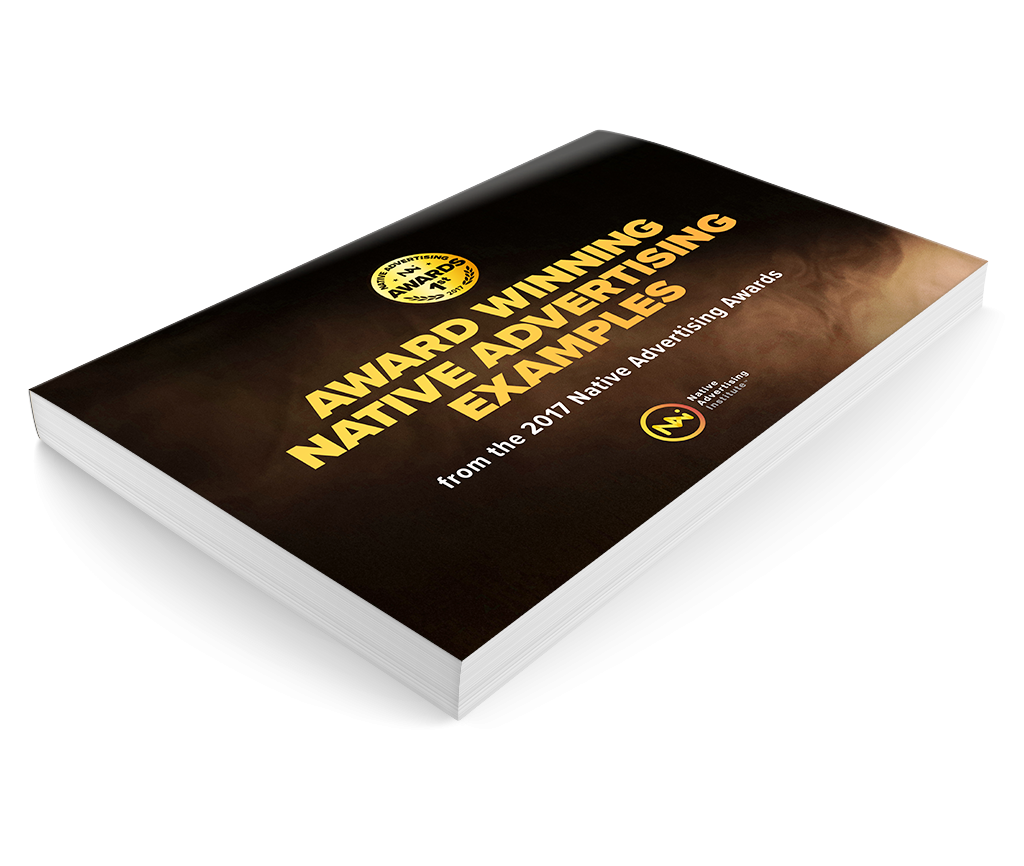This article is part of a series of interviews that NAI has conducted with brands all over the world who are focusing on content marketing and native advertising as part of their marketing strategy.
Please reach out if you want to add your brand to the series.

The big, multi-national software company, SAP, ended up in native advertising by coincidence. But native advertising has now become a powerful part of the company and SAP keeps expanding their native efforts.
How did SAP get caught up in native advertising? How do they work with native? And what does the multinational brand get out of this strategy? We asked Tim Clark, VP, Head of Native Advertising at SAP.
Once we found our voice, we ultimately persevered and proved an important distinction: Tell quality, authentic stories and readers won’t care if it comes from an “advertiser.”
A challenging beginning
When and why did SAP start doing native advertising?
Expanding into native advertising wasn’t a strategic decision, more like a happy accident thanks to our great partnership with Forbes. Around 2011, they came up with this idea of native advertising on Forbes.com – whereby advertisers publish their own content directly to Forbes.com under the moniker of Forbes AdVoice (now called BrandVoice) -- and asked us if we’d pilot the program with them. We agreed, and the rest, as they say, is history.
But like any worthwhile pursuit, it wasn’t easy an easy process at first. We both endured a lot of industry criticism at the time about advertising and editorial blurring the lines of objective journalism.

We essentially ignored the criticism because we knew it wasn’t valid and had more to do with select people being uncomfortable with this new idea that we were helping to define. Once more of our stories were resonating with readers, critics soon became fans because this idea of native advertising transcending traditional content marketing and PR via the quality, authentic stories our employees were crafting.
RELATED: From Content Creation to A/B Testing: 5 Native Advertising Tips to Brands
So once we found our voice, we ultimately persevered and proved an important distinction: Tell quality, authentic stories and readers won’t care if it comes from an “advertiser.”
Now here we are, all these years later, and every major publisher has a native offering of some kind and we have entities like Native Advertising Institute to help formalize and celebrate its importance.
Native advertising offers a very powerful platform to generate brand awareness and engagement around our global marketing and advertising campaigns.
Why is native advertising important for SAP?
SAP is a big, multi-national company and enterprise application market leader with nearly 90,000 employees and 350,000 customers worldwide. Native advertising offers a very powerful platform to generate brand awareness and engagement around our global marketing and advertising campaigns.
It also offers the ultimate canvas for our employee storytellers to highlight cool attributes of our products and solutions in addition to creating interesting stories around broader company initiatives like innovation and purpose.
Which other initiatives do you have for getting your content out into the world and to drive traffic to your own site?
When it comes to native, publishers are becoming much more adept at driving traffic for clients via native ad placements. It now makes up the bulk of our native traffic vs. separately paid promotion. But we still dabble in paid promotion and found that Flipboard is a great way to generate additional traffic and awareness.
RELATED: "When Everybody's Doing Perfect Content, Distribution Is King"
Who better to tell the SAP story than its own employees?
Native is created in-house
What characterises the native advertising that SAP creates?
For SAP, it’s all about quality, authentic brand storytelling and who better to tell the SAP story than its own employees? So that’s a tremendous distinction for us, we only create and publish content from our own employees.
We don’t encourage ghost-writing or agency-generated content simply because audiences are too smart. They can smell disingenuous “marketing” content from a mile away. And, in my opinion, this is typically what you get when you outsource to an outside firm that may not understand the nuances of your company and the industry it competes in.

For SAP, native advertising is worthless if there isn’t a sound content strategy to feed it.
What is good native advertising for SAP?
I don’t think there’s such a thing as “good” native advertising because it’s just a means to an end, a platform, an audience you are trying to resonate with.
For SAP, native advertising is worthless if there isn’t a sound content strategy to feed it. And again, that’s where our employee brand storytellers come into play to let the world know about connected vehicles, blockchain, what we’re doing in IoT, or even how ramen noodles are made.
We syndicate what we determine to be the “best of” content from these channels to our native platforms.
How do you find the stories for your native advertising pieces?
We have a robust editorial process in place where we discover, nurture and elevate in-house writing talent on our SAP Community and internal company portals.

We syndicate what we determine to be the “best of” content from these channels to our native platforms, which creates much-needed connective tissue and gives aspiring writers something to aim for.
It’s really the CTR’s on the creative, contextual ads that wrap around our stories that ultimately determine our success.
Succes and challenges
How do you measure the success of native advertising?
We certainly keep a close eye on organic traffic, social referrals and different areas of reader engagement. However, it’s really the CTR’s on the creative, contextual ads that wrap around our stories that ultimately determine our success.
We’re doing a better job of matching up creative ads to align better with the actual story topics and as a result, we’re enjoying some great results.
RELATED: 5 Things Marketing Managers Need to Consider When Doing Native Advertising in 2018
What are your biggest challenges as a brand when it comes to native advertising?
At this point, most challenges are internal such as setting expectations with executive stakeholders. It’s important to make sure contributors understand our native advertising platforms aren’t used as traditional content marketing/lead gen platforms.
We are expanding our native efforts big time in 2018 and kicked things off at the end of last year with Inc. Magazine, called SAP Inc.
What are the most interesting things going on right now at SAP in relation to native advertising?
We are expanding our native efforts big time in 2018 and kicked things off at the end of last year with Inc. Magazine, called SAP Inc. BrandView. Like Forbes, it’s a great media brand to be associated with that attracts the readers we’re looking to engage with. We hope to make Inc. BrandView a regular part of native efforts in addition to a few other exciting properties.

The important learnings
You started doing native advertising 7 years ago. What have been your most important learnings concerning native advertising since then?
Quality over quantity. Hard stop.
Which mistakes have you learned from?
Calling out competitors is never a good idea. It reflects badly on the brand and does more harm than good.
Customer stories and case studies are a great way to have someone else validate your brand which makes competitors nervous.
What is the alternative?
For SAP, the best way to call out competitors is through indirect means by highlighting the innovations we offer to our customers.
RELATED: Thinking Like a Journalist Will Make You Awesome at Native Advertising
Customer stories and case studies are a great way to have someone else validate your brand which makes competitors nervous. Showcasing video demos of our products and sometimes touching upon broader, strategic themes like company purpose help us differentiate as well.
I would recommend brands get involved with native if they are looking to generate brand awareness
Would you recommend other brands to get involved with native?
Yes, I would recommend brands get involved with native if they are looking to generate brand awareness and/or expand upon “pull” marketing strategies.
RELATED: Content Creation and Distribution: Can't Have One Without the Other
Find the right native partner that makes the most sense for what you are trying to accomplish, execute your plan with passion and you’ll generate great results that will make a positive impact inside and outside the company.
Give yourself the freedom to experiment until you find the right tone and cadence that works best for the company’s needs.
What learnings and good advice would you pass on to other brands who want to get involved with native advertising?
It’s important to set realistic expectations of what you want to accomplish, start out small and gradually ramp up. Give yourself the freedom to experiment until you find the right tone and cadence that works best for the company’s needs.
Native advertising is definitely not for everyone. There’s more heavy lifting involved than meets the eye which many are not prepared for.
How do you know as a brand if native advertising is for you?
Native advertising is definitely not for everyone. There’s more heavy lifting involved than meets the eye which many are not prepared for. You can’t necessarily “buy” your success and expect instant results. It’s a race without a finish line, more art than science and requires disciplined detail-oriented thinking.
See award-winning native advertising examples from brands and publishers
Download: "Award Winning Native Advertising Examples 2017"
 By
By 



